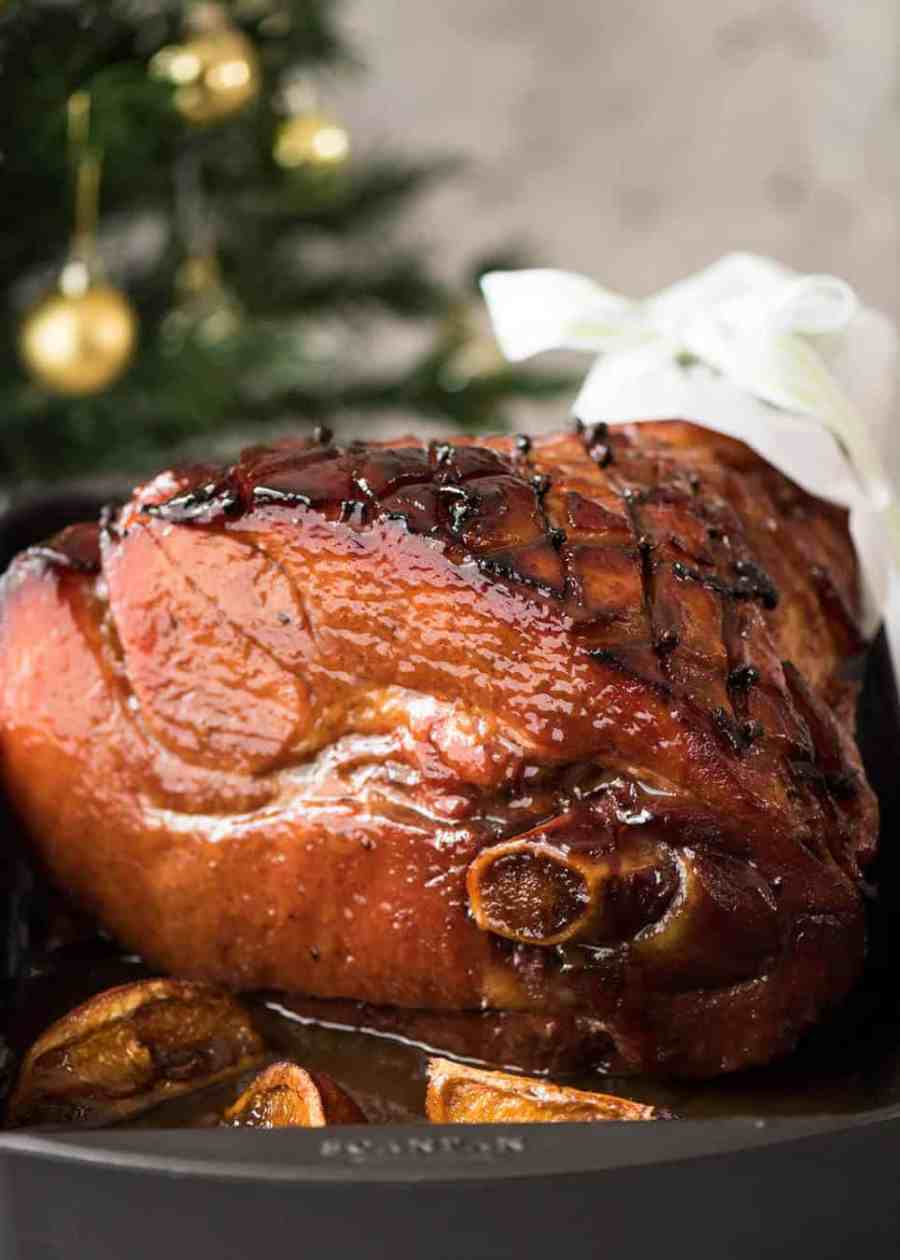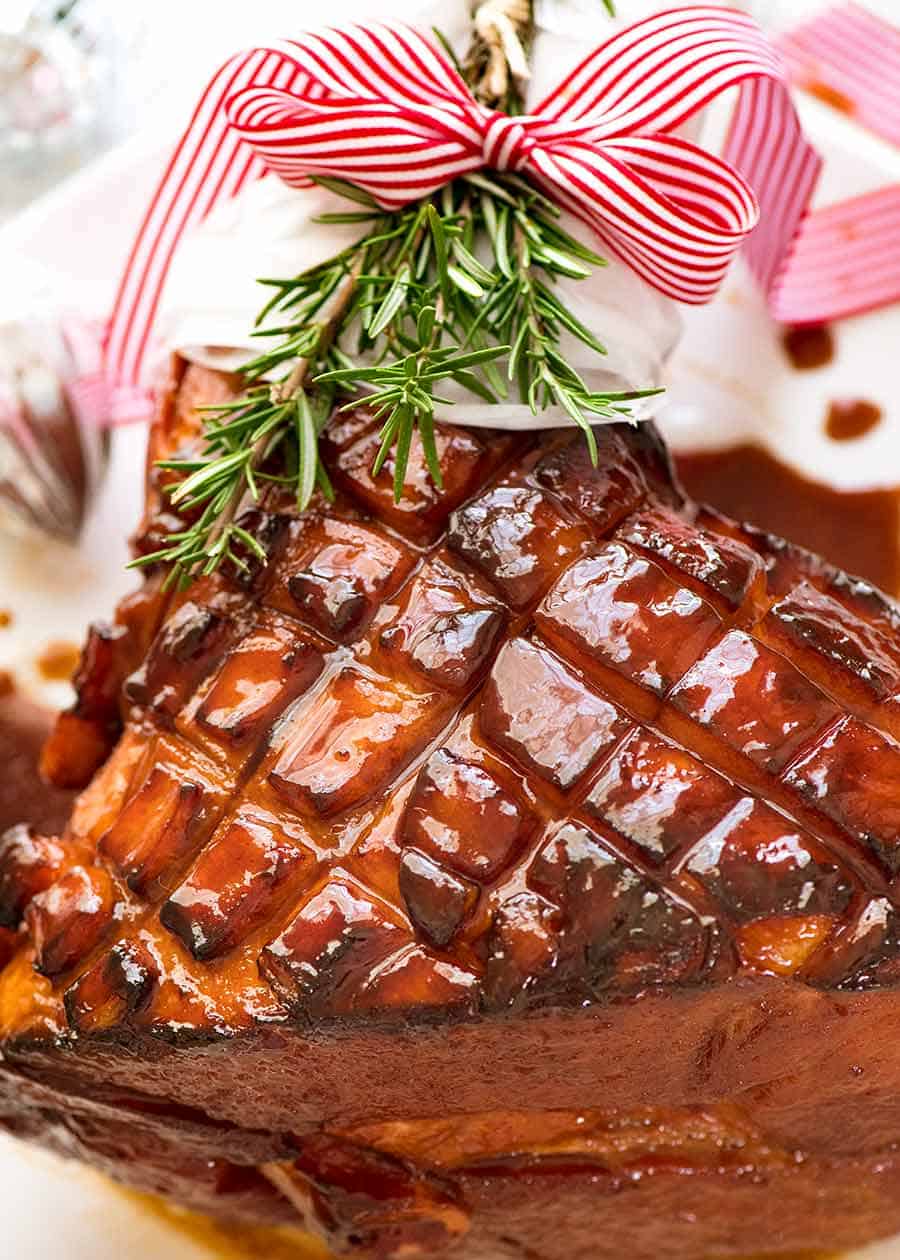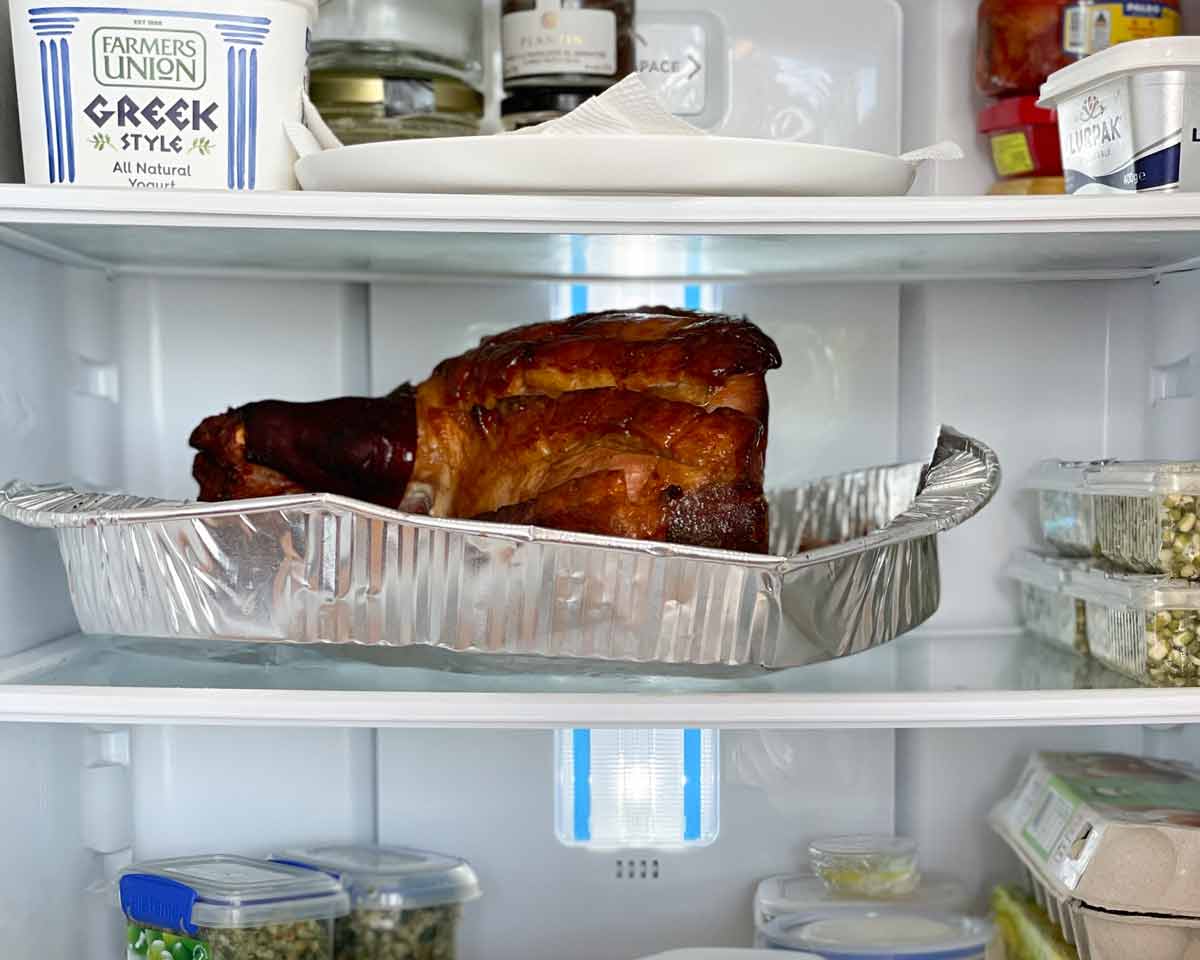For years, I’ve been making my glazed ham the day before serving then just reheating it on the day of. It comes out 100% perfectly. The glaze is just as good as freshly made and the ham flesh doesn’t dry out at all. Use this make-ahead glazed ham method for either my favourite Maple Glazed Ham or classic Brown Sugar Glazed Ham!
I secretly love the challenge of coming up with menus that have a “wow” factor but has plenty of make-ahead options so I can reduce my workload on the day. Nobody wants to be stuck in the kitchen when they have friends and family over.
But also because I secretly dream of being a poised cooking goddess, Nigella Lawson style, who can swan out gracefully from the kitchen with plate after plate of food without breaking a sweat.
As for the not being stuck in the kitchen part? I’m getting pretty good at that.
And for Christmas feasting occasions, one of my handiest secret weapons is to make glazed ham the day before!
The glaze should not be applied until the final hour to 30 minutes, in order to avoid burning the sugars. What you’re going to do with the glaze ingredients is just combine most of them into a paste, and then apply it to the ham. After that, the heat in your oven will take care of everything.
:max_bytes(150000):strip_icc()/__opt__aboutcom__coeus__resources__content_migration__simply_recipes__uploads__2016__03__Glazed-Baked-Ham-LEAD-3-4d76e32d1dd241628ca8908296d8b3fb.jpg)
How to make glazed ham the day before
The thing with glazed ham is that it doesn’t actually need to be cooked because it’s already cooked. It’s just about getting that glaze just right!
- Bake day before – Make your glazed ham the day before when you’ve got time to baby-sit the ham in the oven, basting and brushing as much as needed for the perfect golden glaze. The only ham glazes I use:i) Maple Glazed Ham – my special one, with beautiful woody maple flavourii) Brown Sugar Mustard Glazed Ham – my classic one


- Cool for 2 – 3 hours on the counter until you can barely feel warmth when you hover your hand over the surface. However, the inside will still be warm – it’s a sizeable hunk of meat we’re working with here! Don’t leave a hot ham out for much longer than this, for food safety reasons.
- Fridge 3 hours uncovered – Then refrigerate the ham uncovered for 3 to 6 hours (still in the pan, with all the pan juices) to allow the inside of the ham to cool right down. You do not want to cover the ham while there’s even a bit of residual warmth on the inside because it will make the ham sweat = compromises the glaze.

- Cover then refrigerate overnight – Cover the ham loosely with a sheet of baking/parchment paper (the glaze won’t stick) then loosely with foil or cling wrap.
- Overnight uncovered – Sometimes, if I am pressed for time so the ham hasn’t fully cooled before I head to bed, I just leave the ham uncovered in the fridge overnight. All that fat on the surface of the ham prevents the ham from drying out, and the cut face is so well caramelised that it too is not at any risk of drying out. However, I do recommend covering if you have time to fully cool the ham. For precaution and also so you don’t cross contaminate foods with odours. Nobody wants ham flavour infused in their mini cheesecakes!
- Reheat – Take the ham out of the fridge 2 hours prior. Cover loosely with baking/parchment paper then loosely with foil. Reheat in a 130°C oven for 2 hours or until the centre of the ham registers 60°C/140°F (or a skewer inserted into the middle is hot). Add water as needed to prevent pan juices from drying out (we want a syrupy sauce at the end to serve with the ham!) You shouldn’t need oven time with the foil off to re-caramelise the glaze but you can if needed.
- Baste, baste, baste as needed for a stunning shiny sticky finish!
- Sauce reduction, if needed – If the pan juices are too watery (because you accidentally added too much water when reheating), either return the pan without the ham into the oven to reduce to a syrupy consistency. Or pour it into a saucepan and simmer on the stove.
- Serve the ham as you ordinarily do! My default these days is to put it on a wooden board on a bed of green fluff age (whatever’s cheap at the time – kale, watercress, endive are regulars). Wrap paper around the handle, tie with a ribbon, stick a sprig of rosemary in!

How to Make Classic Pineapple and Honey Glazed Ham at Home
FAQ
Do you put glaze on ham before or after cooking?
Do you put water in bottom of roasting pan for ham?
Should Ham be glazed before cooking?
Since ham is covered with a thick rind of fat, scoring prior to glazing allows the flavors to permeate the meat more effectively. A glaze will also add moisture and encourage caramelization (i.e. more flavor), since most glazes contain some form of sugar. Place ham on cutting board or in the roasting pan, with fat side up.
Is honey baked ham as good as regular ham?
The addition of honey will affect the calorie content of the food. One tablespoon of honey contributes to approximately 64 calories. In addition, the use of heat when making baked ham will reduce the quality of the honey.
Can You glaze a ham with sugar?
If you start brushing it on sooner, the sugar could cause the glaze (and the ham’s skin) to burn. Prepare at least one cup of glaze per five to 10 pounds of ham. To glaze the ham, pull the roasting pan out of the oven and place it on a cooling rack; make sure to close the oven door so heat doesn’t escape.
Should Ham be glazed before reheating?
The site advises against glazing ham at the beginning of its reheating. Large hams require several hours to heat all the way through. When the ham is heated uncovered, and glazed too early, it dries out. Kitchn says to cover the ham, then heat it until it registers a temperature of around 120 degrees Fahrenheit.
